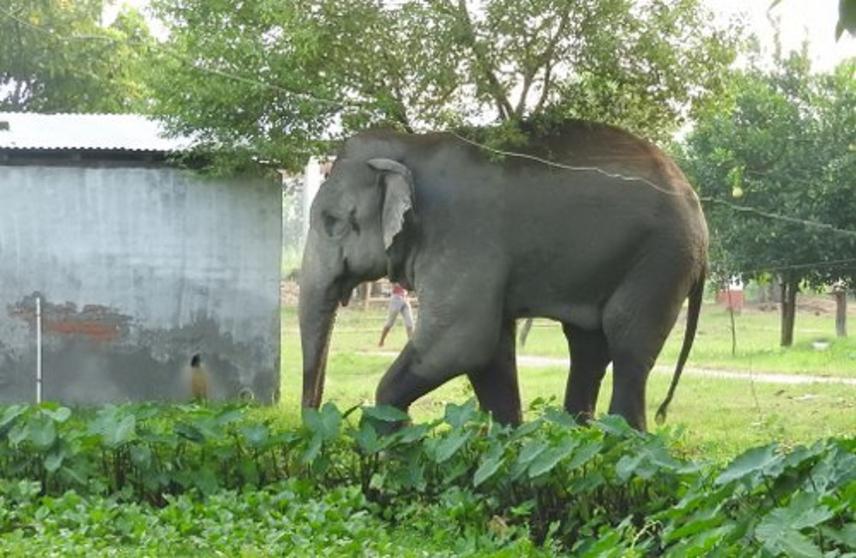Rama Mishra
Other projects
26 Apr 2016
Develop Human Elephant Coexistence through Training and Awareness Programs to Locals Community in Central Nepal
4 Oct 2019
Assess Human-Elephant Conflict and Develop Human-Elephant Coexistence Through Community Awareness in Eastern Nepal
Project aims to develop human elephant coexistence for long term survival of the elephants in Chitwan by educating people and minimizing human casualties from elephants.

Asian elephant Elaphus maximus is an umbrella species in Asian forests but highly threatened due to rapid decline in population and shrinking habitats. Thus, this species is listed as 'Endangered' in IUCN redlist, 'Appendix-1' of CITES. Asian elephants’ habitat is shrinking rapidly mainly due to conversion, degradation and fragmentation and many ancient migratory routes are destroyed. This all lead to accelerated Human-Elephant Conflict (HEC).
Estimated 109-142 wild elephants are confined in narrow strip of Siwalik/Terai forests in four isolated sub-populations in Nepal, one of them is central sub-population from Chitwan, Parsa & surrounding areas. There also exists huge pressure on forests from several hundred thousand people living next. Thus, Chitwan-Parsa is a HEC hotspot.
There are mainly three forms of HEC:
1) human injuries/death
2) house/property destruction
3) crop damage.
This project will focus on the first one which is ultimate expression of conflict. Every year more than 15 persons killed by elephants in Nepal; half of them from Chitwan/Parsa. From close observation of human kills/injuries we found that it happens due to people's wrong actions toward elephants. It can be avoided if locals are properly aware about elephant behavior and act responsibly. In most cases they try to save their crop/property on risk of their own life. There is compensation scheme for the damage from elephants but many locals are not aware properly. Electric fence installed in the area is not maintained properly. Low level of education and awareness is responsible for most of such problems. This project is started realizing the need to educate local people about the appropriate behaviour towards elephants to create harmony of elephant and people.
The overall goal of project is to develop human elephant coexistence for long term survival of the elephants in this landscape. Specifically, the project aims to reduce human casualties from elephants to minimum through different education packages to the local communities. The proposed project will reach directly to the 300 local residents living next to forest in Thori and Nirmalbasti area of Chitwan buffer zone through six units of human elephant co-existence trainings. Indirectly through the trainees and different mass media based programs, the project will reach to more than 50,000 people. FM based early warning system will be developed as a trial. All of these will help to achieve the goal of zero human casualties and death from the elephant attack.